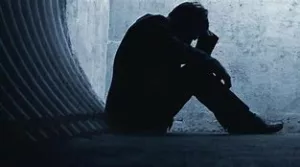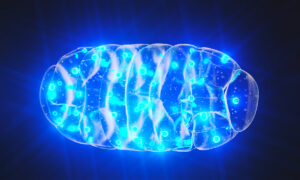What is catatonic schizophrenia?
At the other end of the extreme, the individual can demonstrate motor activity that is considered “excessive” and “peculiar,” such as echolalia (mimicking sounds) or Echopraxia (mimicking movements). This is called catatonic excitement.
In this article, we will look at the symptoms of catatonic schizophrenia, its causes, diagnosis, and how it is treated.
- Catatonia only occurs in some individuals with schizophrenia
- Symptoms can involve flipping between hyperactivity and under activity
- Risk factors for catatonic schizophrenia are the same as those for schizophrenia in general
- There are now a number of effective treatments for the symptoms of catatonic schizophrenia
Symptoms of catatonic schizophrenia
![[Woman with schizophrenia]](https://new.jonandjoshmemorial.org/wp-content/uploads/2020/07/woman-with-schizophrenia.jpg)
Modern treatments are effective at managing catatonic schizophrenia.
Catatonic schizophrenia is much rarer than it used to be thanks to improved treatments. Catatonic states are now more likely to be found in types of mental illness other than schizophrenia, such as neurodevelopmental (conditions that affect children during the development of their nervous system), psychotic bipolar, or depressive disorders.
Individuals with catatonia may flip between decreased and excessive motor activity.
With modern treatments, patients with catatonic schizophrenia can manage their symptoms easier, making the likelihood of leading a happier and healthier life much greater.
The clinical picture of catatonia is dominated by at least three of the following symptoms:
- Stupor – no psychomotor activity, no interaction with the environment
- Catalepsy – includes adopting unusual postures
- Waxy flexibility – if an examiner places the patient’s arm in a position, they will maintain this position until it is moved again
- Mutism – limited verbal responses
- Negativism – little or no response to instructions or external stimuli
- Posturing – actively holding a posture against gravity
- Mannerism – carrying out odd, exaggerated actions
- Stereotypy – repetitive movements without an apparent reason
- Agitation – for no known reason
- Grimacing
- Echolalia – mimicking another person’s speech
- Echopraxia – mimicking another person’s movements
Without proper treatment, a catatonic episode can persist for days or even weeks.
Schizophrenia symptoms
Apart from the above, the patient may also have the following symptoms of schizophrenia:
- Delusions – The patient may believe they are being persecuted. Alternatively, they may think they have extraordinary powers and gifts.
- Hallucinations – particularly hearing voices (auditory hallucination), but hallucinations can include visual (seeing things that aren’t there) or hallucinations involving any other sensory system.
- Thought disorder – when speaking, the person can jump from one subject to another for no logical reason. The patient’s speech might be muddled and impossible to understand.
- Lack of motivation (avolition) – the patient loses their drive. They give up on everyday activities, such as washing and cooking.
- Poor expression of emotions – they may not respond to happy or sad events, or may react inappropriately.
- Social withdrawal – when a patient with schizophrenia withdraws socially it is often because they believe somebody is going to harm them.
- Unaware of illness (also referred to as “poor insight”) – because the hallucinations and delusions seem so real to the patient, many do not believe they are ill.
- Cognitive difficulties – the patient’s ability to concentrate, remember things, plan ahead, and to organize is affected and communication becomes more difficult.
Patients with the symptoms of catatonic schizophrenia are not usually able to get medical help on their own. Often, it is a family member or friend who seeks medical help.
Risk factors for catatonic schizophrenia
The risk factors for catatonic schizophrenia are the same as those for other schizophrenia subtypes, they include:
- Genetics – individuals with a family history of schizophrenia have a higher risk of developing it themselves.
- Viral infection – some recent studies suggest that viral infections may predispose the child to development of schizophrenia.
- Fetal malnutrition – if the fetus suffers from malnutrition during pregnancy, there is a higher risk of developing schizophrenia.
- Stress during early life – severe stress early in life may contribute to the development of schizophrenia. Stressful experiences often occur just before schizophrenia appears.
- Childhood abuse or trauma.
- Age of parents at birth – older parents have a higher risk of having children who develop schizophrenia.
- Drugs – the use of drugs that affect the mind during adolescence may increase the risk of developing schizophrenia.
Causes of catatonic schizophrenia
Nobody is sure what the causes of catatonic schizophrenia are. Research indicates that most forms of schizophrenia are caused by brain dysfunction, we just don’t know why that brain dysfunction occurs. Most likely, it is caused by a combination of genetics and environmental triggers, such as stress.
Experts believe that an imbalance of dopamine, a neurotransmitter, is involved in the onset of schizophrenia. They believe that this imbalance is most likely caused by genes that make someone susceptible to the illness. Some researchers say the levels of other neurotransmitters, like serotonin, might also be involved.
Diagnosis of catatonic schizophrenia
![[Doctor examining brain scans]](https://new.jonandjoshmemorial.org/wp-content/uploads/2020/07/doctor-examining-brain-scans.jpg)
A series of tests will help doctors diagnose catatonic schizophrenia.
A physician who suspects a patient may have catatonic schizophrenia will recommend a series of medical and psychological tests to help with the diagnosis; these might include:
- Physical exam – the patient’s height, weight, heart rate, blood pressure, and temperature are checked. The doctor will listen to the heart and lungs and check the abdomen.
- CBC (complete blood count) – to check for alcohol and drugs, as well as thyroid function.
- MRI or CT scan – the aim is to look for any abnormalities in brain structure.
- EEG (electroencephalogram) – to check for brain function.
- Psychological evaluation – a psychiatrist will ask the patient (if possible) about their thoughts, feelings, and behavior patterns. They will discuss symptoms, when they started, how severe they are, and how they affect the patient’s life. They will also ask whether the patient has thoughts about harming themselves or others.
It can take a long time to diagnose catatonic schizophrenia accurately. Other conditions, like mania, seizure disorder, substance abuse, and severe depression share symptoms with catatonic schizophrenia and must be ruled out first.







